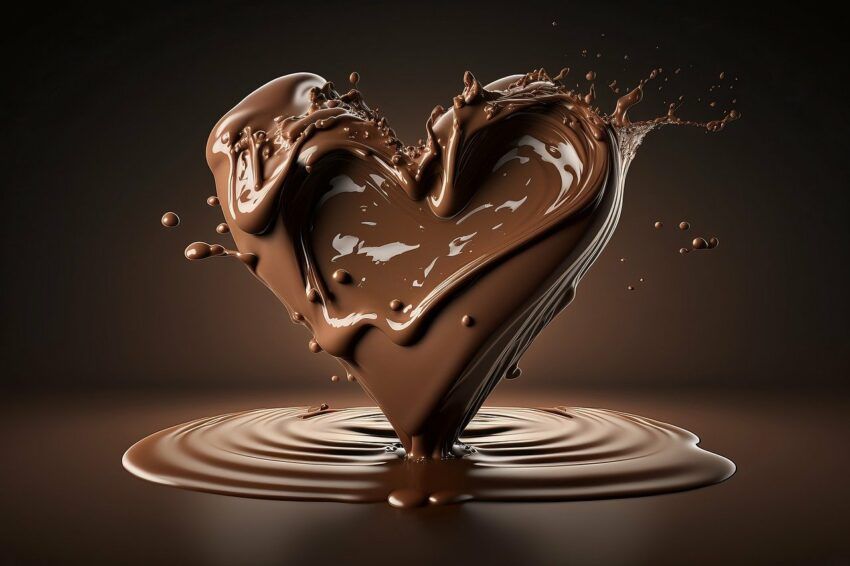A milk chocolate heart. Image by belkacem hassani from Pixabay

Harvesting the Cacao Beans
The journey of milk chocolate begins with the humble cacao bean, which grows on the cacao tree (Theobroma cacao). These trees are primarily cultivated in tropical regions near the equator, such as West Africa, Central and South America, and parts of Asia. The cacao pods are carefully harvested by hand, and the beans are extracted from the pods and fermented to develop their rich flavor.
Drying and Roasting
After fermentation, the cacao beans are dried and roasted to bring out their aroma and flavor. This process also helps to remove any remaining moisture and makes it easier to remove the outer shell of the beans, revealing the inner nibs.
Grinding and Conching
The roasted cacao nibs are then ground into a thick paste called chocolate liquor or cocoa mass. This paste is then combined with cocoa butter, milk solids, and sugar in precise ratios to create the milk chocolate mixture. The mixture is then subjected to a process called conching, where it is kneaded and aerated for several hours or even days. This process helps to develop the smooth, velvety texture and distribute the flavors evenly throughout the chocolate.
Tempering and Molding
Once the conching process is complete, the milk chocolate mixture is tempered, which involves carefully heating and cooling the chocolate to ensure it has the right texture and shine. The tempered chocolate is then poured into molds or deposited onto a cooling table to form the desired shapes, such as bars, chips, or other confections.
Packaging and Distribution
After the milk chocolate has solidified and cooled, it is carefully packaged to protect it from light, moisture, and other environmental factors that could affect its quality. The packaged milk chocolate is then distributed to retailers and consumers around the world, ready to be enjoyed as a delicious treat or used as an ingredient in various desserts and baked goods.


